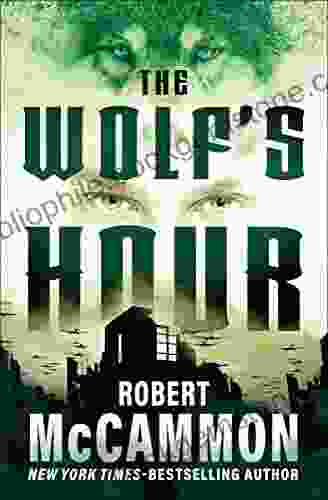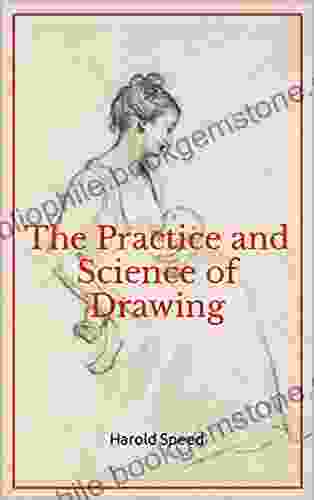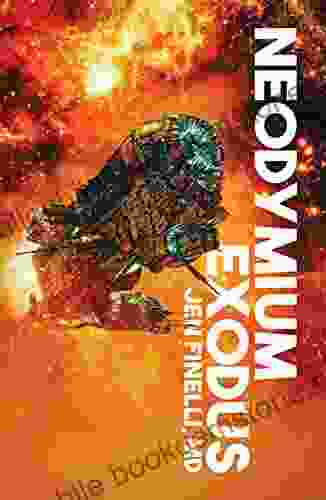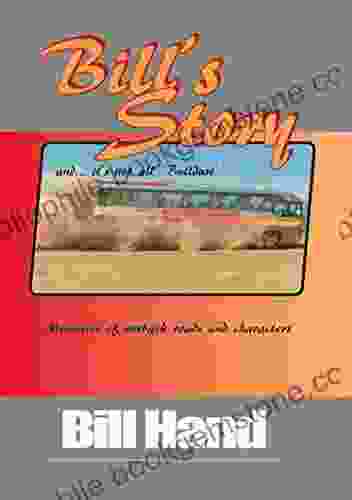The Practice and Science of Drawing: A Fully Illustrated Guide

Drawing is a skill that can be learned by anyone with practice and patience. It is a versatile art form that can be used to create a wide variety of images, from realistic portraits to abstract designs. In this article, we will explore the practice and science of drawing, providing tips and techniques for beginners and experienced artists alike.
The Basics of Drawing
Before you can start drawing, it is important to understand the basics of the art form. This includes learning about the different types of drawing pencils, paper, and techniques.
4 out of 5
| Language | : | English |
| File size | : | 3384 KB |
| Text-to-Speech | : | Enabled |
| Screen Reader | : | Supported |
| Enhanced typesetting | : | Enabled |
| Print length | : | 328 pages |
| Lending | : | Enabled |
Types of Drawing Pencils
There are many different types of drawing pencils available, each with its own unique properties. Some of the most common types of pencils include:
* Graphite pencils: These are the most common type of drawing pencil. They are made from a mixture of graphite and clay, and they come in a variety of hardness grades, from soft (6B) to hard (9H). Soft pencils are ideal for creating dark, rich tones, while hard pencils are better for creating light, delicate lines. * Charcoal pencils: Charcoal pencils are made from pure charcoal, and they produce a deep, velvety black line. They are ideal for creating dramatic sketches and drawings. * Colored pencils: Colored pencils are made from a mixture of wax and pigment. They come in a wide variety of colors, and they can be used to create vibrant, colorful drawings.
Types of Drawing Paper
The type of paper you use will also affect the outcome of your drawing. Some of the most common types of drawing paper include:
* Sketch paper: Sketch paper is a thin, inexpensive paper that is ideal for quick sketches and practice drawings. * Drawing paper: Drawing paper is a thicker, more durable paper that is better for finished drawings. It comes in a variety of textures, from smooth to rough. * Bristol board: Bristol board is a thick, smooth paper that is ideal for detailed drawings and illustrations.
Drawing Techniques
There are many different drawing techniques that you can use to create different effects. Some of the most common techniques include:
* Line drawing: Line drawing is a simple technique that involves using lines to create an image. You can use a variety of different line weights and styles to create different effects. * Hatching: Hatching is a technique that involves using parallel lines to create shading and texture. You can vary the spacing and angle of the lines to create different effects. * Cross-hatching: Cross-hatching is a technique that involves using two or more layers of hatching to create a darker, richer tone. * Stippling: Stippling is a technique that involves using dots to create shading and texture. You can vary the size and spacing of the dots to create different effects.
The Science of Drawing
In addition to the practice of drawing, there is also a science to it. This science involves understanding the principles of perspective, anatomy, and light and shadow.
Perspective
Perspective is the art of creating the illusion of depth in a two-dimensional drawing. There are two main types of perspective: linear perspective and aerial perspective.
* Linear perspective: Linear perspective involves using lines to create the illusion of depth. The lines in a linear perspective drawing converge at a single point, called the vanishing point. * Aerial perspective: Aerial perspective involves using color and shading to create the illusion of depth. Objects that are closer to the viewer are brighter and more detailed, while objects that are farther away are darker and less detailed.
Anatomy
Anatomy is the study of the human body. It is important to understand the anatomy of the human body if you want to draw realistic figures. This includes knowing the different bones, muscles, and tendons in the body.
Light and Shadow
Light and shadow are essential elements of drawing. They can be used to create a sense of depth and realism in a drawing. The way that light and shadow fall on an object will affect its appearance.
Tips for Drawing
Here are a few tips to help you improve your drawing skills:
* Practice regularly: The key to becoming a good drawer is to practice regularly. The more you practice, the better you will become. * Draw from observation: The best way to learn to draw is to draw from observation. This means drawing from real objects, people, and places. * Use reference materials: Reference materials, such as anatomy books and photographs, can be helpful when you are drawing from observation. * Experiment with different techniques: There are many different drawing techniques that you can use to create different effects. Experiment with different techniques to find the ones that you like best. * Don't be afraid to make mistakes: Mistakes are a natural part of the learning process. Don't be afraid to make mistakes, and learn from them.
Drawing is a challenging but rewarding art form. With practice and patience, anyone can learn to draw. The tips and techniques provided in this article will help you get started on your drawing journey.
4 out of 5
| Language | : | English |
| File size | : | 3384 KB |
| Text-to-Speech | : | Enabled |
| Screen Reader | : | Supported |
| Enhanced typesetting | : | Enabled |
| Print length | : | 328 pages |
| Lending | : | Enabled |
Do you want to contribute by writing guest posts on this blog?
Please contact us and send us a resume of previous articles that you have written.
 Best Book
Best Book Page Flip
Page Flip Bookshelf
Bookshelf Literary loom
Literary loom Chapter
Chapter Bookish
Bookish PageTurner
PageTurner Bibliophile
Bibliophile Story
Story Inkwell
Inkwell Bookworm
Bookworm Labyrinth
Labyrinth Plot Twist
Plot Twist Prose
Prose Paperback
Paperback Storyteller
Storyteller Sanctuary
Sanctuary Fiction
Fiction Reading
Reading Chronicle
Chronicle Read
Read Peter Canellos
Peter Canellos Pam Flowers
Pam Flowers Susie Nash
Susie Nash Piper Kerman
Piper Kerman Steven Watts
Steven Watts Bianca Del Rio
Bianca Del Rio Michael Shea
Michael Shea Thomas Lockwood
Thomas Lockwood Robert O Harder
Robert O Harder Kit Thornton
Kit Thornton Robert Mads Anderson
Robert Mads Anderson Stephen Fraser
Stephen Fraser Richard Poulin
Richard Poulin Clayton M Rines
Clayton M Rines Morris Rossabi
Morris Rossabi Jonathan Nevair
Jonathan Nevair Gail Thorell Schilling
Gail Thorell Schilling Sara Ivy Hill
Sara Ivy Hill M K Eidem
M K Eidem Jonquil Graham
Jonquil Graham Kimberly A Whitler
Kimberly A Whitler Heather Morgan
Heather Morgan William Walker Atkinson
William Walker Atkinson Dean Koontz
Dean Koontz Manny Serrato
Manny Serrato Julien Blanc Gras
Julien Blanc Gras Gina Dejesus
Gina Dejesus Jayne Shrimpton
Jayne Shrimpton Tasha Oren
Tasha Oren Sara El Sayed
Sara El Sayed Gabriella Guglielminotti Trivel
Gabriella Guglielminotti Trivel Winston S Churchill
Winston S Churchill Iris Murdoch
Iris Murdoch Maksim Goldenshteyn
Maksim Goldenshteyn Stanley C Jenkins
Stanley C Jenkins Rochelle Alers
Rochelle Alers Bradford Pearson
Bradford Pearson J Malcolm Garcia
J Malcolm Garcia Mike Shepherd
Mike Shepherd Sarah Helm
Sarah Helm Giannalberto Bendazzi
Giannalberto Bendazzi Joseph Luzzi
Joseph Luzzi Tom Clancy
Tom Clancy Kimberla Lawson Roby
Kimberla Lawson Roby John La Farge
John La Farge Judy Cook
Judy Cook Nathan Johnson
Nathan Johnson David Rapp
David Rapp Jonathan P Brazee
Jonathan P Brazee Linda Holtzschue
Linda Holtzschue Helena Hunt
Helena Hunt N Scott Momaday
N Scott Momaday Jeanine Kitchel
Jeanine Kitchel Hannu Rajaniemi
Hannu Rajaniemi David Brin
David Brin Andreas Marks
Andreas Marks Greater Than A Tourist
Greater Than A Tourist Billy Pegram
Billy Pegram Yaakov Yanky Greenspan
Yaakov Yanky Greenspan Guisela Latorre
Guisela Latorre Paul Wells
Paul Wells Polly Mckenna Cress
Polly Mckenna Cress Janwillem Vandewetering
Janwillem Vandewetering Eden Robinson
Eden Robinson Dallas Shaw
Dallas Shaw General
General Brenda Cooper
Brenda Cooper Gianrico Carofiglio
Gianrico Carofiglio Jamie Davis
Jamie Davis M D Cooper
M D Cooper Simon Proudman
Simon Proudman Octavia E Butler
Octavia E Butler Jonathan D Spence
Jonathan D Spence Ivan Margolius
Ivan Margolius Marita Golden
Marita Golden M S Holm
M S Holm Stephanie Storey
Stephanie Storey Tyler Farnham
Tyler Farnham Sam Magavern
Sam Magavern Reyna Grande
Reyna Grande John Barnes
John Barnes Ted Seth Jacobs
Ted Seth Jacobs Kimora Lee Simmons
Kimora Lee Simmons Sandra Stewart
Sandra Stewart Mariah Carey
Mariah Carey Liz Lerman
Liz Lerman Matt Hranek
Matt Hranek John Canemaker
John Canemaker Keisha J
Keisha J Jerry Yarnell
Jerry Yarnell Riley Sager
Riley Sager H Peter Alesso
H Peter Alesso P Z Walker
P Z Walker J Pal
J Pal Gail Pallin
Gail Pallin Kathleen James Chakraborty
Kathleen James Chakraborty Nichole Ashlyn Jackson
Nichole Ashlyn Jackson Rachel Baker
Rachel Baker Yaa Gyasi
Yaa Gyasi Henry Hongmin Kim
Henry Hongmin Kim Godfree Roberts
Godfree Roberts Randolph Lalonde
Randolph Lalonde Harry Feeney
Harry Feeney Lingo Mastery
Lingo Mastery Carl Weber
Carl Weber Lawrence Grobel
Lawrence Grobel Ja Nese Dixon
Ja Nese Dixon Tiffany Jenkins
Tiffany Jenkins Joseph L Scarpaci
Joseph L Scarpaci Thomas R Lindlof
Thomas R Lindlof Robin Landa
Robin Landa Terry Harrison
Terry Harrison Gregg Kreutz
Gregg Kreutz Heather D Ward
Heather D Ward Shari Lapena
Shari Lapena David Carrier
David Carrier Sherman Alexie
Sherman Alexie Orla Kiely
Orla Kiely Logan Ryles
Logan Ryles H Robert Charles
H Robert Charles Shameek Speight
Shameek Speight Simone Edwards
Simone Edwards Paul Levitz
Paul Levitz Steve Roberts
Steve Roberts Jay A Stout
Jay A Stout Robert Farris Thompson
Robert Farris Thompson K Kris Loomis
K Kris Loomis Diz White
Diz White Henry Bond
Henry Bond Vic Costello
Vic Costello Jean Pierre Sylvestre
Jean Pierre Sylvestre Warren Olson
Warren Olson Meriel Thurstan
Meriel Thurstan Roger Housden
Roger Housden Sebastian Smee
Sebastian Smee Steve Cohen
Steve Cohen John L Williams
John L Williams Irmgard Weitlaner Johnson
Irmgard Weitlaner Johnson Jennifer Worth
Jennifer Worth Tung Nguyen
Tung Nguyen The Total Travel Guide Company
The Total Travel Guide Company Gene Luen Yang
Gene Luen Yang Colin Thubron
Colin Thubron Doug Gelbert
Doug Gelbert Sahera Patel
Sahera Patel Anne Marie Paquet Deyris
Anne Marie Paquet Deyris David Schwartz
David Schwartz Rachel Simon
Rachel Simon Philip Steadman
Philip Steadman Kyle Chayka
Kyle Chayka Jean Hugard
Jean Hugard Ray Daniels
Ray Daniels Katharine Gregorio
Katharine Gregorio Stephen Malins
Stephen Malins Jim Schutze
Jim Schutze Gordon Allard
Gordon Allard Glenn Alterman
Glenn Alterman Judy Tzu Chun Wu
Judy Tzu Chun Wu Michael Oren Fitzgerald
Michael Oren Fitzgerald Ross Anderson
Ross Anderson Ndeye Labadens
Ndeye Labadens Gerald M Kilby
Gerald M Kilby Malcolm C Salaman
Malcolm C Salaman Naima Coster
Naima Coster K Stephen Prince
K Stephen Prince Sunil Tanna
Sunil Tanna Nick Middleton
Nick Middleton James Fox
James Fox Kyle Kirrin
Kyle Kirrin Tilda Balsley
Tilda Balsley Linda Cooper Bowen
Linda Cooper Bowen Robert Shufflebotham
Robert Shufflebotham Michael Cawood
Michael Cawood Heidi Moksnes
Heidi Moksnes Billy Showell
Billy Showell Timothy Ellis
Timothy Ellis Ian Coleman
Ian Coleman Will Jordan
Will Jordan J A Rogers
J A Rogers Fred Moten
Fred Moten Tw Robinson
Tw Robinson Johnny B Truant
Johnny B Truant Judy Batalion
Judy Batalion Katie Dowe
Katie Dowe Paul Wallis
Paul Wallis Nathaniel Flakin
Nathaniel Flakin Gubba
Gubba Ian Olio
Ian Olio Joe Jackson
Joe Jackson Brian Patton
Brian Patton Margaret Coel
Margaret Coel Scott Lunt
Scott Lunt Luigi Lanzi
Luigi Lanzi John Lewis
John Lewis Jonathan Chapman
Jonathan Chapman Sonya Curry
Sonya Curry M Angela Sanders
M Angela Sanders Mark C Taylor
Mark C Taylor Hooman Majd
Hooman Majd Jan Strickland
Jan Strickland Rose Edin
Rose Edin Kayla Machine
Kayla Machine Marcel Proust
Marcel Proust Mark Doty
Mark Doty J Susan Corley
J Susan Corley Robert Asprin
Robert Asprin Kiyo Sato
Kiyo Sato Sarah Sofia Granborg
Sarah Sofia Granborg The Dancing Pages Publishing House
The Dancing Pages Publishing House Jennifer Criswell
Jennifer Criswell Laura Boswell
Laura Boswell Grey King
Grey King E Train Learning
E Train Learning Helen Burstyn
Helen Burstyn Robert Hughes
Robert Hughes Dima Zales
Dima Zales Jennifer J Baumgartner
Jennifer J Baumgartner Neil Gaiman
Neil Gaiman Wendy Hollender
Wendy Hollender Rick Steves
Rick Steves Lizzy Bequin
Lizzy Bequin Polly Barton
Polly Barton Nancy J Morris
Nancy J Morris Gordon Mackenzie
Gordon Mackenzie Mark Bergin
Mark Bergin Grace Lee Boggs
Grace Lee Boggs Saxon Andrew
Saxon Andrew Yingjin Zhang
Yingjin Zhang Debra Gwartney
Debra Gwartney Zane Grey
Zane Grey Ryan Debruyn
Ryan Debruyn Rough Guides
Rough Guides Victoria Abbott Riccardi
Victoria Abbott Riccardi Ian K Smith
Ian K Smith Mark Harlan
Mark Harlan Giuseppe Leonardi
Giuseppe Leonardi Rinoz
Rinoz Tom Kidd
Tom Kidd Victoria H Smith
Victoria H Smith Robert Elms
Robert Elms Rebekah J Kowal
Rebekah J Kowal Megan Wells
Megan Wells Jim Carpenter
Jim Carpenter Sonora Carver
Sonora Carver Ginger Booth
Ginger Booth Peter F Hamilton
Peter F Hamilton Jennifer D Walker
Jennifer D Walker David Sobotta
David Sobotta Lisa Mulcahy
Lisa Mulcahy Patrick Leigh Fermor
Patrick Leigh Fermor Luke Sullivan
Luke Sullivan William A Kappele
William A Kappele Michael J Arlen
Michael J Arlen J B Turner
J B Turner Hal Rubenstein
Hal Rubenstein John Muir Laws
John Muir Laws Jimmy Clay
Jimmy Clay Werner Stejskal
Werner Stejskal Lisa Dines
Lisa Dines J G Heck
J G Heck Jan V White
Jan V White Mike Ashley
Mike Ashley Sujatha Gidla
Sujatha Gidla Nikki Mcclure
Nikki Mcclure Lyn Barrett
Lyn Barrett Jen Finelli
Jen Finelli Kimberly Brooks
Kimberly Brooks Grif Stockley
Grif Stockley Steve Lyons
Steve Lyons Justin Mccurry
Justin Mccurry Geoff Saunders
Geoff Saunders Oleg Senkov
Oleg Senkov Jeanne Cooper
Jeanne Cooper Henry Warren
Henry Warren Mickey Zucker Reichert
Mickey Zucker Reichert Judi Whitton
Judi Whitton Ian King
Ian King Rosie Rosenzweig
Rosie Rosenzweig Indy Quillen
Indy Quillen Tetsuko Kuroyanagi
Tetsuko Kuroyanagi Karin Slaughter
Karin Slaughter Justin Taylor
Justin Taylor Rick Partlow
Rick Partlow Ginger Lawrence
Ginger Lawrence Bill Bryson
Bill Bryson Jen Turano
Jen Turano Gunnar Staalesen
Gunnar Staalesen Simon Tam
Simon Tam Rebecca Atwood
Rebecca Atwood Carolyn Phillips
Carolyn Phillips John Seed
John Seed Gil Mcneil
Gil Mcneil Candice Lau
Candice Lau Jack Higgins
Jack Higgins Toni Petniunas
Toni Petniunas Shantanu Naidu
Shantanu Naidu Joyce Maynard
Joyce Maynard Grant Fuller
Grant Fuller Gary W Gallagher
Gary W Gallagher Richard Sayette
Richard Sayette Lucy Worsley
Lucy Worsley Peter Matthiessen
Peter Matthiessen Scott Ryan
Scott Ryan Lou Schreiber
Lou Schreiber Robert Kunstaetter
Robert Kunstaetter Haidee Jo Summers
Haidee Jo Summers Karen Taborn
Karen Taborn Joanne Sharpe
Joanne Sharpe Liz Scotta
Liz Scotta Isadora Duncan
Isadora Duncan Valerie David
Valerie David Erin H Turner
Erin H Turner Gregory Maguire
Gregory Maguire Jean Claude Baker
Jean Claude Baker Tom Wheeler
Tom Wheeler Garner Simmons
Garner Simmons Jake Bible
Jake Bible Justine Cowan
Justine Cowan Helen Wilkie
Helen Wilkie Glen Gavin
Glen Gavin Sylvie Covey
Sylvie Covey Jen Carter
Jen Carter Rachel Berenson Perry
Rachel Berenson Perry David Leddick
David Leddick George R R Martin
George R R Martin Roger Kimball
Roger Kimball Ben Philippe
Ben Philippe Cap Daniels
Cap Daniels Gavin Menzies
Gavin Menzies Theodora Goss
Theodora Goss Cathy Johnson
Cathy Johnson Gabrielle Union
Gabrielle Union W Michael Gear
W Michael Gear Maxwell Farmer
Maxwell Farmer Larry Schroeder
Larry Schroeder Catharine Slade Brooking
Catharine Slade Brooking Oscar Wilde
Oscar Wilde Heather Murdock
Heather Murdock Pat Mcleod
Pat Mcleod William Boyd
William Boyd Tom Coffman
Tom Coffman Mona Golabek
Mona Golabek Peter Hopkirk
Peter Hopkirk Jonathan White
Jonathan White Kurt Meissner
Kurt Meissner George W Bush
George W Bush Jonathan Moeller
Jonathan Moeller Charles Gorham
Charles Gorham R L Giddings
R L Giddings Gerald Sorin
Gerald Sorin Marla Day Fitzwater
Marla Day Fitzwater Vine Aduara
Vine Aduara M G Herron
M G Herron Harry Turtledove
Harry Turtledove Shimon Redlich
Shimon Redlich Sharon C Cooper
Sharon C Cooper Mark Evanier
Mark Evanier Tabakmann
Tabakmann Ben Box
Ben Box Kerry Duncan
Kerry Duncan Steven D Wolf
Steven D Wolf Kim Heinbuch
Kim Heinbuch Dr Will Taegel
Dr Will Taegel Yayoi Kusama
Yayoi Kusama Michael Hulse
Michael Hulse Sydney L Iaukea
Sydney L Iaukea Margo Bond Collins
Margo Bond Collins Vincent Lenihan
Vincent Lenihan Helen Birch
Helen Birch Merri Melde
Merri Melde Leo Tolstoy
Leo Tolstoy Jean Claude Ellena
Jean Claude Ellena Lee Summers
Lee Summers Harlan Hogan
Harlan Hogan Monona Rossol
Monona Rossol Lisa Harris
Lisa Harris Thomas A Kelly
Thomas A Kelly Ellen Tomaszewski
Ellen Tomaszewski Vivienne Westwood
Vivienne Westwood Thomas Dublin
Thomas Dublin Maggie March
Maggie March Sarah Cortez
Sarah Cortez Gill Barron
Gill Barron Jon Nelson
Jon Nelson Kyle Mills
Kyle Mills Gav Thorpe
Gav Thorpe Jenefer Robinson
Jenefer Robinson Margaret Randall
Margaret Randall Paul Oldfield
Paul Oldfield Harry Bernstein
Harry Bernstein Mimi Kwa
Mimi Kwa Nicole Falls
Nicole Falls Greg Albert
Greg Albert Nathan Mccall
Nathan Mccall Paris Permenter
Paris Permenter Gianni Simone
Gianni Simone Sam Gennawey
Sam Gennawey Blue Knight
Blue Knight James D Keyser
James D Keyser Leigh Bardugo
Leigh Bardugo Joanie Holzer Schirm
Joanie Holzer Schirm Rebecca Zanetti
Rebecca Zanetti Skye Mackinnon
Skye Mackinnon Tad Williams
Tad Williams Thomas Wolf
Thomas Wolf Gail Morin
Gail Morin Neema Avashia
Neema Avashia William C Rempel
William C Rempel Lisa Strattin
Lisa Strattin January Bell
January Bell Viola Grace
Viola Grace Donna Rifkind
Donna Rifkind Jerry Shepard
Jerry Shepard Greg Simonds
Greg Simonds Jonathon Keats
Jonathon Keats Jaquavis Coleman
Jaquavis Coleman Robert Charles Wilson
Robert Charles Wilson Mike Chaplin
Mike Chaplin Lucy Coleman
Lucy Coleman Jim Gertz
Jim Gertz Rosanne Knorr
Rosanne Knorr Morr Meroz
Morr Meroz Helena Reckitt
Helena Reckitt Christopher Butler
Christopher Butler Tu Ilape Vimahi
Tu Ilape Vimahi William Mcinnes
William Mcinnes Spike Bucklow
Spike Bucklow Rae Morris
Rae Morris Sam Kashner
Sam Kashner Bella Blair
Bella Blair Patrick Lange
Patrick Lange Heinz Peter Wagner
Heinz Peter Wagner Olivia Gaines
Olivia Gaines Bob Spitz
Bob Spitz Hubert Allcock
Hubert Allcock Laird Barron
Laird Barron Joseph Labrecque
Joseph Labrecque Ilka Hammer
Ilka Hammer Kristal Norton
Kristal Norton Casey Watson
Casey Watson John D Macdonald
John D Macdonald Joseph Heywood
Joseph Heywood Keith Brymer Jones
Keith Brymer Jones Tracy Kidder
Tracy Kidder Shane Lambert
Shane Lambert Greg Iles
Greg Iles Sallie Ketcham
Sallie Ketcham Sandy Mitchell
Sandy Mitchell John Wooley
John Wooley James Willard Schultz
James Willard Schultz S L Giger
S L Giger Bradford Bates
Bradford Bates Simu Liu
Simu Liu Gb Tran
Gb Tran Renae Anderson
Renae Anderson Gary Greene
Gary Greene Harold Speed
Harold Speed Naomi Duguid
Naomi Duguid Susan Donnell
Susan Donnell Helen Cates
Helen Cates Jan Steinbright
Jan Steinbright Global Baby Care
Global Baby Care Michael Z Williamson
Michael Z Williamson Unique Journal
Unique Journal Kim Brown Seely
Kim Brown Seely Paul Benedict Rowan
Paul Benedict Rowan Greg Montego
Greg Montego Cj Fentiman
Cj Fentiman Mark Anthony Rolo
Mark Anthony Rolo Kay Redfield Jamison
Kay Redfield Jamison Guillermo Del Toro
Guillermo Del Toro Heidi Ardizzone
Heidi Ardizzone James O Barr
James O Barr Christopher R Cox
Christopher R Cox Jessica Pan
Jessica Pan Roxanne Dunbar Ortiz
Roxanne Dunbar Ortiz Zondervan
Zondervan Martina Nohl
Martina Nohl Jay Roeder
Jay Roeder Gerald Durrell
Gerald Durrell Tawana
Tawana Gennaro Contaldo
Gennaro Contaldo Vasanth Simon
Vasanth Simon Garance Dore
Garance Dore George Mather
George Mather Dana Tenzler
Dana Tenzler Jonathan Brooks
Jonathan Brooks Max Wilk
Max Wilk Kal Wagenheim
Kal Wagenheim Jakob Tanner
Jakob Tanner Hannes Rall
Hannes Rall Gary Troia
Gary Troia George Kubler
George Kubler Mary E Davis
Mary E Davis Joanne Fluke
Joanne Fluke Marie D Jones
Marie D Jones Harmon Cooper
Harmon Cooper Vanja Hamzic
Vanja Hamzic Julius Schnorr Von Carolsfeld
Julius Schnorr Von Carolsfeld Theo Fennell
Theo Fennell Richard Dunlop
Richard Dunlop Megan Fairchild
Megan Fairchild Gilbert King
Gilbert King Nick Webb
Nick Webb Viktorija Todorovska
Viktorija Todorovska Roger Winter
Roger Winter Hannah Hinchman
Hannah Hinchman Gayle Rosengren
Gayle Rosengren Masakazu Ishikawa
Masakazu Ishikawa James Lawson
James Lawson David Ogilvy
David Ogilvy Tayari Jones
Tayari Jones Lucius Shepard
Lucius Shepard Aubrey Beardsley
Aubrey Beardsley Susan Hardman Moore
Susan Hardman Moore Joseph Sheppard
Joseph Sheppard Ruth Collis
Ruth Collis Marilyn Grant
Marilyn Grant B V Larson
B V Larson Leslie J Sherrod
Leslie J Sherrod S L Rowland
S L Rowland Jeremy Hicks
Jeremy Hicks Harriet Beecher Stowe
Harriet Beecher Stowe Black Rose
Black Rose Syd Field
Syd Field Lucy Grealy
Lucy Grealy Len Lawson
Len Lawson Robert Sinnerbrink
Robert Sinnerbrink Sandra A Krasovec
Sandra A Krasovec Robert Mccammon
Robert Mccammon Nalo Hopkinson
Nalo Hopkinson Judith Pearson
Judith Pearson Jonathan Ned Katz
Jonathan Ned Katz Helen Hoang
Helen Hoang Marlene Blessing
Marlene Blessing Paul Theroux
Paul Theroux Susan Zwerman
Susan Zwerman Pat Spooner
Pat Spooner Karen Traviss
Karen Traviss Wolfgang Riebe
Wolfgang Riebe Larry D Ellis
Larry D Ellis Remy Stern
Remy Stern Ta Nehisi Coates
Ta Nehisi Coates George H Gisser
George H Gisser Rachel Schreiber
Rachel Schreiber Graham Rowley
Graham Rowley Roland Betancourt
Roland Betancourt Gayle Bird
Gayle Bird Tobie S Stein
Tobie S Stein H G Wells
H G Wells Gordon Doherty
Gordon Doherty Joi Barrios
Joi Barrios Julien Gorbach
Julien Gorbach Geoffrey Corfield
Geoffrey Corfield Hans Von Trotha
Hans Von Trotha Rich Polanco
Rich Polanco H Beam Piper
H Beam Piper Gloria Fossi
Gloria Fossi
Light bulbAdvertise smarter! Our strategic ad space ensures maximum exposure. Reserve your spot today!

 Garrett BellAfrofuturism, Black Comics, and Superhero Poetry: A Literary Exploration of...
Garrett BellAfrofuturism, Black Comics, and Superhero Poetry: A Literary Exploration of... Derrick HughesFollow ·12.9k
Derrick HughesFollow ·12.9k Bret MitchellFollow ·11.4k
Bret MitchellFollow ·11.4k Jean BlairFollow ·17.1k
Jean BlairFollow ·17.1k Raymond ChandlerFollow ·9.3k
Raymond ChandlerFollow ·9.3k Henry David ThoreauFollow ·4k
Henry David ThoreauFollow ·4k Brady MitchellFollow ·16.5k
Brady MitchellFollow ·16.5k Dashawn HayesFollow ·5.6k
Dashawn HayesFollow ·5.6k Andrew BellFollow ·14.3k
Andrew BellFollow ·14.3k

 Scott Parker
Scott ParkerIn Her Own Words, In Their Own Words: A Journey of...
In Her Own Words, In...

 Colin Richardson
Colin RichardsonYou Don't Have to Say You Love Me: A Lyrical Journey...
In the annals of popular music,...

 Clark Campbell
Clark CampbellThe Enthralling Narrative of John Tanner, the Falcon: A...
The Man, the...

 Glenn Hayes
Glenn HayesThe Wolf Hour: A Spine-Tingling Thriller that Unravels...
Synopsis Prepare...

 Thomas Mann
Thomas MannThe Pirate Tribulation: A Literary Masterpiece Exploring...
Setting Sail into the...

 Eugene Powell
Eugene PowellEscape The Rat Race And Live Life As An Expat
How to find a job abroad If you're...
4 out of 5
| Language | : | English |
| File size | : | 3384 KB |
| Text-to-Speech | : | Enabled |
| Screen Reader | : | Supported |
| Enhanced typesetting | : | Enabled |
| Print length | : | 328 pages |
| Lending | : | Enabled |










